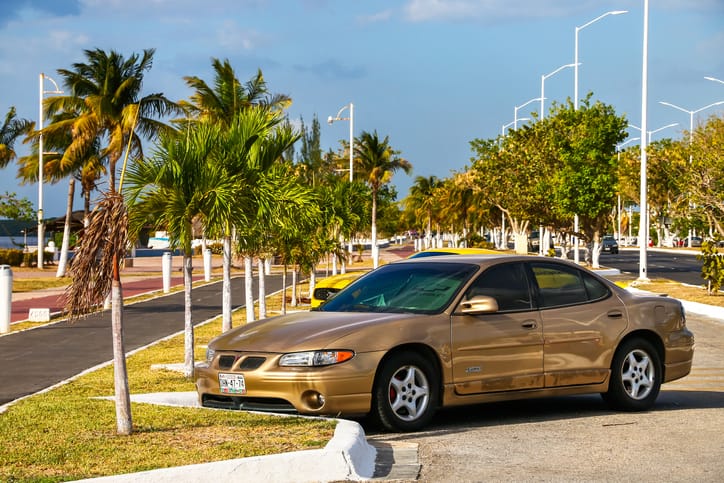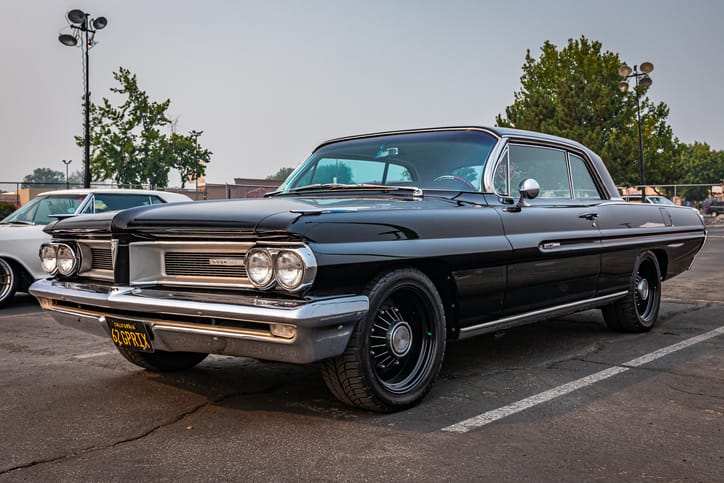The Enduring Legacy of the Pontiac Grand Prix: From Grand Tourer to Family Sedan

The Pontiac Grand Prix carved a unique path through automotive history, evolving from a luxurious performance coupe to a comfortable family sedan over its 40-year lifespan. Introduced in 1962, the Grand Prix captured the essence of the American grand tourer, offering a blend of style, comfort, and power. Throughout its seven generations, the Grand Prix adapted to changing market trends, becoming a testament to Pontiac's design and engineering prowess.
The Grand Arrival: A Performance Icon (1962-1972)
The first generation Grand Prix (1962-1964) emerged as a full-size performance coupe, targeting the growing market for stylish and powerful personal luxury vehicles. Its sleek lines, powerful V8 engines, and luxurious interior features like bucket seats and a center console resonated with drivers seeking a distinctive driving experience. The Grand Prix quickly established itself as a competitor to the likes of the Ford Thunderbird and the Chevrolet Monte Carlo.

The second generation (1965-1967) saw the Grand Prix adopt a more muscular design, reflecting the era's love for bold styling. The iconic "split-level" grille and hidden headlights became signature elements, further solidifying the car's presence on the road. Performance remained a priority, with powerful V8 engines like the legendary 421ci unit providing exhilarating acceleration.
The third generation (1968-1972) witnessed a significant shift in design philosophy. The car adopted a longer, wider, and more luxurious form, emphasizing comfort and grand touring capabilities. While performance remained impressive, the Grand Prix transitioned towards a more refined driving experience, catering to a broader range of buyers.
Adapting to the Times: Shifting Gears (1973-1987)
The 1973 oil crisis and stringent emissions regulations forced a change of direction for the Grand Prix. The fourth generation (1973-1977) saw a downsizing in both size and engine power. While performance enthusiasts lamented the shift, the Grand Prix continued to offer a comfortable and stylish driving experience, appealing to a market prioritizing fuel efficiency and practicality.
The fifth generation (1978-1987) further embraced the downsizing trend, adopting a more streamlined and aerodynamic design. While performance remained modest, handling improvements and technological advancements kept the Grand Prix competitive. This generation also saw the introduction of the Grand Prix Turbo, offering a brief resurgence in performance-oriented options.
A New Chapter: Embracing the Sedan (1988-2008)
The sixth generation (1988-1996) marked a major turning point for the Grand Prix. In response to changing consumer preferences, Pontiac transformed the Grand Prix into a front-wheel-drive four-door sedan. This shift towards practicality aimed to compete with popular family sedans like the Honda Accord and Toyota Camry. Despite the departure from its performance-oriented roots, the Grand Prix offered a comfortable ride, spacious interior, and a range of engine options to cater to various needs.
The final generation (1997-2008) continued the four-door sedan format, refining the design and offering a wider range of trim levels and performance options. The Grand Prix GTP, for example, offered a powerful supercharged engine, providing a nostalgic nod to the car's earlier performance-focused legacy. However, the market for large sedans began to decline in the late 2000s, leading to the discontinuation of the Grand Prix in 2008.
A Legacy of Style and Innovation
Despite its production ending in 2008, the Pontiac Grand Prix remains a significant piece of American automotive history. Its evolution from a luxurious performance coupe to a practical family sedan reflects the changing landscape of the industry and Pontiac's ability to adapt. The Grand Prix continues to hold a special place in the hearts of enthusiasts, remembered for its bold designs, powerful engines in its early years, and comfortable driving experience throughout its lifespan. While the future of the Grand Prix remains uncertain, its legacy as a versatile and stylish automobile is undeniable.
